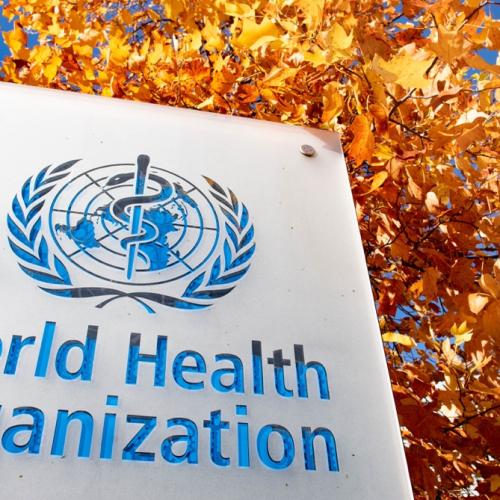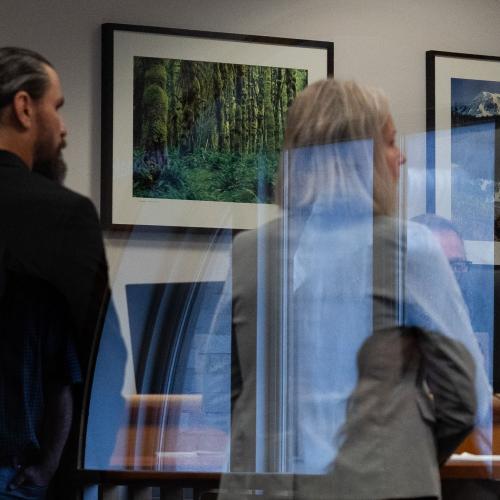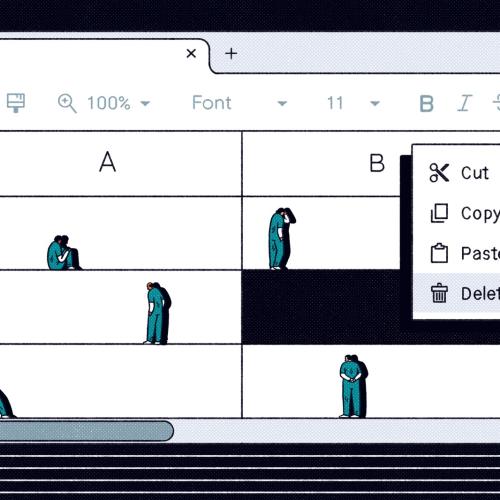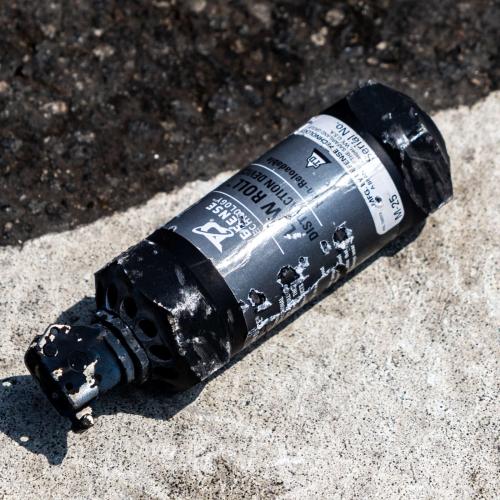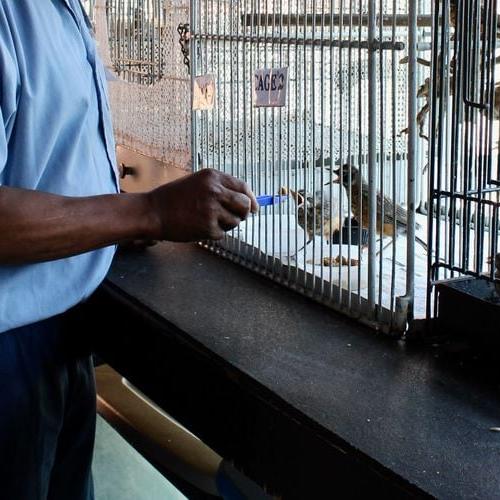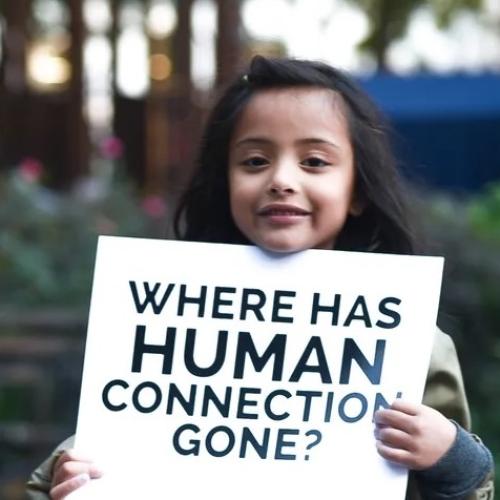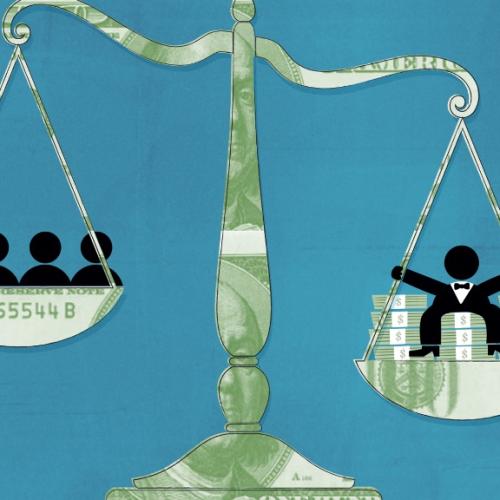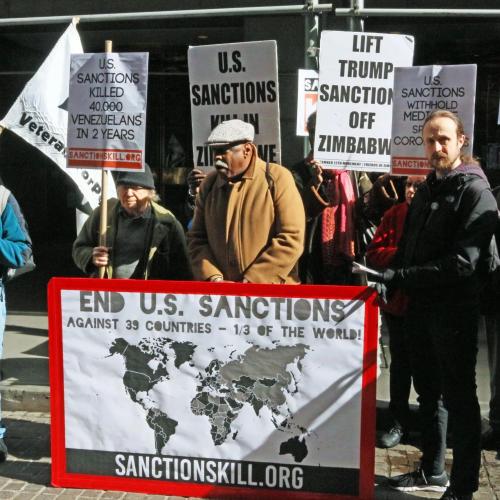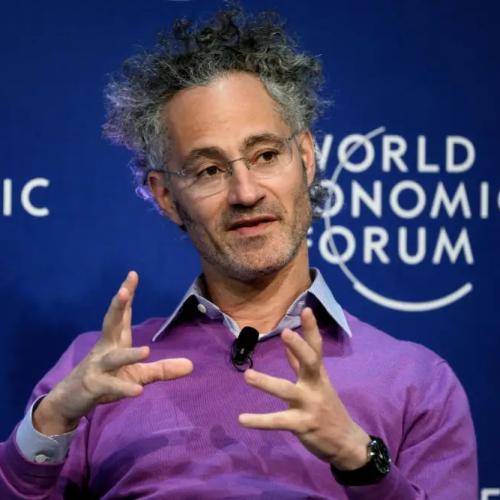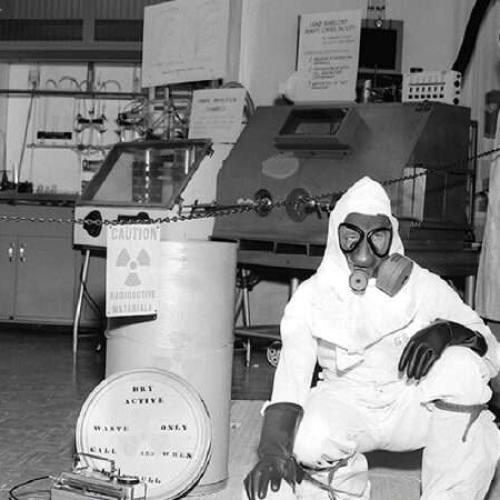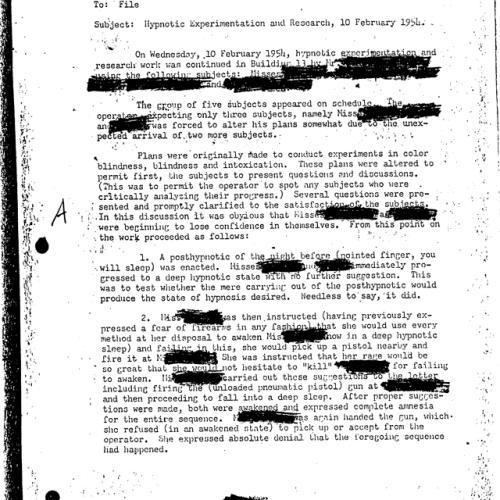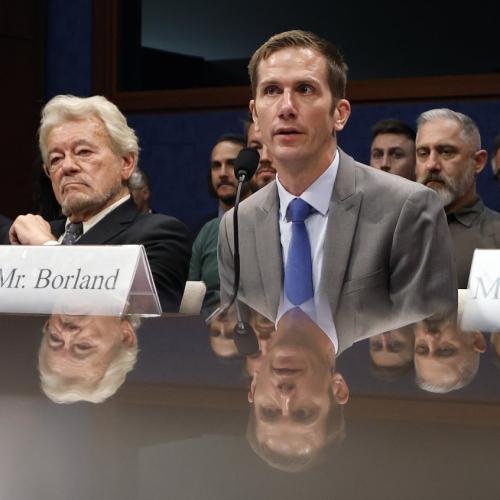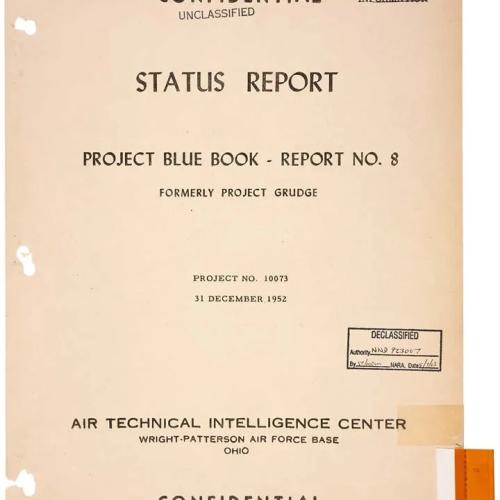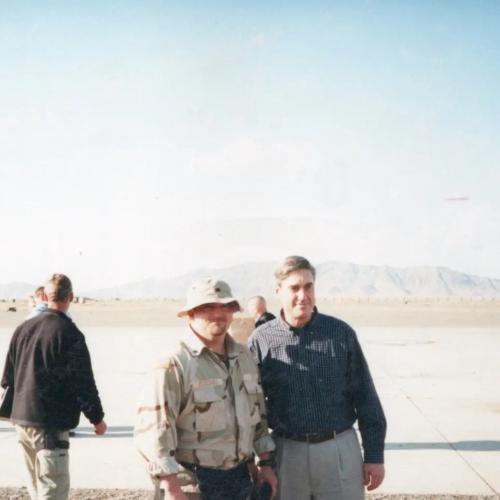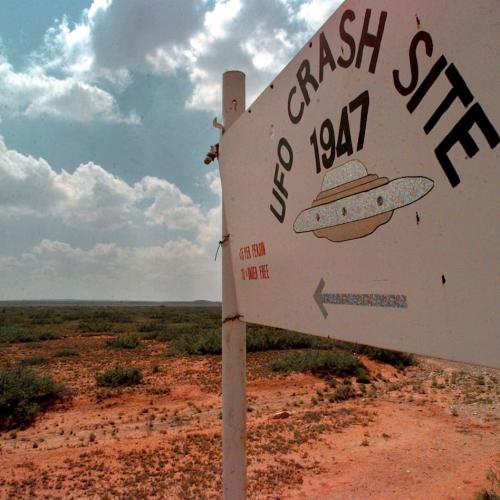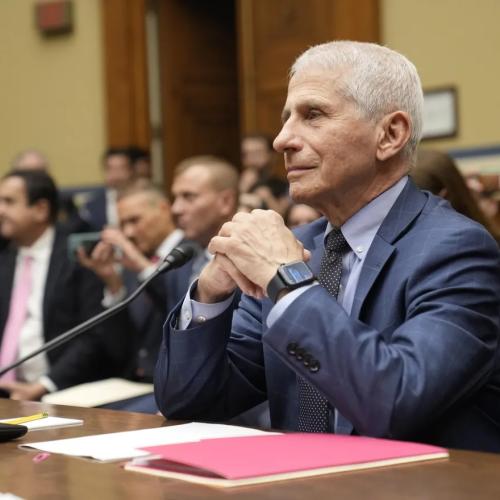Global Warming News Stories
Below are key excerpts of revealing news articles on global warming from reliable news media sources. If any link fails to function, a paywall blocks full access, or the article is no longer available, try these digital tools.
When it comes to global warming, we know that the real problem is not just fossil fuels it is the logic of endless growth. If we dont keep the global economy growing by at least 3% per year, it plunges into crisis. This ... makes little sense given the limits of our finite planet. Climate change is the most obvious symptom of this contradiction, but were also seeing it in the form of deforestation, desertification and mass extinction. Our economic system is incompatible with life on this planet. Debt is the reason the economy has to grow in the first place. Because debt always comes with interest, it grows exponentially. Without growth, debt piles up and eventually triggers an economic crisis. The global economic system runs on money that is itself debt. Instead of letting commercial banks create money by lending it into existence, we could have the state create the money and then spend it into existence. [In] the 1930s ... a group of economists in Chicago proposed [this] as a way of curbing the reckless lending that led to the Great Depression. The Chicago Plan, as it was called, made headlines again in 2012 when progressive IMF economists put it forward as a strategy for preventing the global financial crisis from recurring. This idea is already beginning to gain traction: in the UK, the campaigning group Positive Money has generated momentum around it. The idea has its enemies, of course. If we shift to a positive money system, big banks will no longer have the power to literally make money out of nothing.
Note: For more along these lines, see concise summaries of deeply revealing news articles on financial industry corruption and global warming.
Buried below the ice sheet that covers most of Greenland, there's an abandoned U.S. Army base. Camp Century had trucks, tunnels, even a nuclear reactor. It was also a test site for deploying nuclear missiles. The camp was abandoned almost 50 years ago. But serious pollutants were left behind. Now a team of scientists says that as climate warming melts the ice sheet, those pollutants could spread. [Researcher William Colgan] found unclassified records that described what was left behind there - for example, the nuclear reactor was removed, but low-level radioactive cooling water used in it was not. There were very likely PCBs, which are toxic compounds in electrical equipment. There's no record of how much remained. Colgan says the Army figured all of it would be entombed forever. "They thought it would snow in perpetuity," he says, "and the phrase they used was that the waste would be preserved for eternity by perpetually accumulating snow." Except now, the climate has changed. Greenland's ice sheet is melting. Computer models say the camp could be uncovered by the end of this century. Meltwater could easily end up in the buried camp and then carry contamination through under-ice channels to the ocean. Colgan says it's unclear who owns this waste. The Army built the camp under a treaty between the U.S. and Denmark, which had jurisdiction over Greenland. It's a legal dilemma that's likely to start cropping up more often.
Note: For more along these lines, see concise summaries of deeply revealing global warming news articles from reliable major media sources.
In April, the email in-boxes of energy executives filled with alerts from the nations top corporate law firms. The subject: the multistate investigation into whether Exxon Mobil committed fraud by publicly discounting the impact of fossil fuels on climate change. The investigations into whether their industry suppressed findings and misled investors, policymakers and the public about global warming not only raise the prospects of criminal charges, but add momentum to a legal campaign [comparable] to the decades-long battle against Big Tobacco. In April, a federal judge in Oregon ruled that a case against the U.S. government for inaction on climate change could proceed, explaining that the alleged valuing of short term economic interest despite the cost to human life required examination by the courts. Environmental lawyers have argued for years that governments and companies are legally obligated to reduce greenhouse gas emissions. They had little success, with the U.S. Supreme Court ruling in 2011 that the federal government alone had the power to control carbon emissions. But the recent entry of state prosecutors into the legal battle opens up a new line of inquiry: Did fossil fuel companies mislead their investors and the public on their own views on climate change and the risk it posed to their business? The recent legal rush follows the revelation last year that Exxon had engaged in climate change research in the 1970s and 80s, and was warned by its own scientists of the growing threat.
Note: Read about the recent New York Attorney General's investigation into Exxon's climate change lies. For more along these lines, see concise summaries of deeply revealing climate change news articles from reliable major media sources.
It's a case an attorney called "one of the most significant in our nation's history." Twenty-one young people (ages 8 to 19) are suing President Barack Obama and the federal government over making a mess of the planet for future generations. The government and fossil fuel groups had asked the court to toss out the federal case, but Judge Thomas Coffin on Friday denied those requests. "The nascent nature of these proceedings dictate further development of the record before the court can adjudicate whether any claims or parties should not survive for trial," Coffin wrote in the decision. "Accordingly, the court should deny the motions to dismiss." The climate kids' argument is multifaceted and nuanced, bringing in concepts of public trust doctrine as well as constitutional rights to life, liberty and property. But one of the oh-wow points they're making is this: Young people and unborn generations are being discriminated against when it comes to the U.S. propagation of climate change. They will live through an era of rising seas, heat waves, droughts, floods and extinctions that are without precedent. Yet they have little or no voice in the political system that, despite some bold steps in the right direction, continues to lease federal property for fossil fuel extraction and continues to subsidize pollution. Officials have continued to pursue harmful practices while knowing their actions would have dire future consequences. The youth plaintiffs want the feds to come up with a wholesale plan to fight climate change.
Note: Explore a treasure trove of concise summaries of incredibly inspiring news articles which will inspire you to make a difference.
The Rockefeller Family Fund, a charity that supports causes related to the environment, economic justice and other issues, is liquidating its investments in fossil fuel companies, including Exxon Mobil. "While the global community works to eliminate the use of fossil fuels, it makes little sense - financially or ethically - to continue holding investments in these companies," the fund said. In announcing its decision, the Rockefeller fund attacked Exxon for what it called the company's "morally reprehensible conduct," alluding to allegations that the company has hidden evidence that fossil fuels contribute to climate change. "Evidence appears to suggest that the company worked since the 1980s to confuse the public about climate change's march, while simultaneously spending millions to fortify its own infrastructure against climate change's destructive consequences and track new exploration opportunities as the Arctic's ice receded," the fund said. New York State Attorney General Eric Schneiderman is said to have launched an investigation last fall into whether Exxon misled the public and investors about ... climate risks. California Attorney General Kamala Harris is also reportedly looking into whether Exxon lied about climate change. The probes followed a report by InsideClimate News ... claiming that Exxon sought to undermine scientific evidence that pointed to the growing threat of climate change.
Note: The Rockefeller Brothers Fund announced its fossil fuel divestment in 2014. For more along these lines, see concise summaries of deeply revealing news articles on climate change and the corruption of science from reliable major media sources.
Newly published classified documents show the National Security Agency spied on a 2010 conversation between Italian Prime Minister Silvio Berlusconi and Israeli Prime Minister Benjamin Netanyahu as the two discussed ways to improve Israels relationship with the United States. The Italian-Israeli conversation is included in one of five NSA documents released Tuesday by WikiLeaks. Two of the documents focus on climate change, one relates to trade talks, and two report on Italian government communications. The intelligence reports date from 2007 through 2011, [and] provide additional details on U.S. efforts to spy on countries taking part in the 2009 Copenhagen Climate Change Conference, which failed to reach an agreement. One ... contains details of a confidential discussion about climate change negotiations between U.N. Secretary General Ban Ki-moon and the German Chancellor Angela Merkel in the lead-up to the conference. The NSA report is stamped U.N. diplomatic, German leadership, and Top Secret Gamma, the Gamma indicating an extremely sensitive spying operation. The interception methods stated on the latest leaked intelligence reports are Unconventional and SCS, which stands for Special Collection Service. SCS involves joint NSA and CIA eavesdropping operations run covertly inside U.S. and allied foreign embassy buildings in foreign capitals.
Note: For more along these lines, see concise summaries of deeply revealing intelligence agency corruption news articles from reliable major media sources.
The Power Pallet ... generates electricity from corn cobs, wood chips, coconut shells and other kinds of cheap, dense biomass. Although it costs $24,000 to $34,000, the Pallet can churn out electricity for less money than the diesel generators that power businesses across the developing world, while coughing up less pollution. And when used properly, the Pallet is carbon negative, pulling more heat-trapping carbon dioxide out of the atmosphere than it pumps back in. Its very existence is almost an accident. Years ago, the tinkerers who would eventually found All Power were ... building flame-throwing robots for Burning Man. Berkeley officials objected and convinced Pacific Gas and Electric Co. to cut the power [to their property]. As a result, Jim Mason, All Powers CEO, developed a keen interest in generating electricity off the grid. We got shut off and decided to hack climate change, Price said. Now All Power has morphed into one of the Bay Areas unlikeliest exporters, installing 700 machines in more than 30 countries worldwide. Its 30 employees assemble one or two Pallets each week, all in Berkeley. And All Power is one of a handful of American companies displaying their products at this weeks international climate conference in Paris. The Pallet uses gasification, a process more than a century old, that subjects carbon-rich organic material to high heat. Whats left of the original material becomes biochar, which can be mixed into soil as fertilizer. That waste product - biochar - is how the Pallet achieves carbon-negative status.
Note: Explore a treasure trove of concise summaries of incredibly inspiring news articles which will inspire you to make a difference.
The New York attorney general has begun an investigation of Exxon Mobil to determine whether the company lied to the public about the risks of climate change or to investors about how such risks might hurt the oil business. The investigation focuses on whether statements the company made to investors about climate risks as recently as this year were consistent with the companys own long-running scientific research. The people said the inquiry would include a period of at least a decade during which Exxon Mobil funded outside groups that sought to undermine climate science, even as its in-house scientists were outlining the potential consequences and uncertainties to company executives. In a separate inquiry, Peabody Energy, the nations largest coal producer, [has] been under investigation by the attorney general for two years over whether it properly disclosed financial risks related to climate change. Some experts see the potential for a legal assault on fossil fuel companies similar to the lawsuits against tobacco companies [that] were found guilty of a massive 50-year scheme to defraud the public. Inside Climate News and The Los Angeles Times have reported that Exxon Mobil was well aware of the risks of climate change from its own scientific research, and used that research in its long-term planning for activities like drilling in the Arctic, even as it funded groups from the 1990s to the mid-2000s that denied serious climate risks.
Note: For those interested in the global warming debate, read this Forbes article and this one debunking it to see just how polarized and non-scientific both sides of the debate are. This CNN article states that Antarctica has been gaining ice at least since 1992. For more along these lines, see concise summaries of deeply revealing climate change news articles from reliable major media sources.
Rich western countries and the worlds leading developing nations are spending up to $200bn (130bn) a year subsidising fossil fuels, according to a report from the Organisation for Economic Cooperation and Development. The ... thinktank said its 34 members plus six of the biggest emerging economies China, India, Brazil, Indonesia, Russia and South Africa were spending money supporting the consumption and production of coal, oil and gas that should be used to tackle climate change. The OECD secretary general, Angel Gurra, [said] that governments were spending almost twice as much money subsidising fossil fuels as was needed to meet the climate-finance objectives set by the international community at climate change summits, which have set a target of mobilising $100bn a year by 2020. Although ... fossil fuel subsidies were on a downward trend since peaking in 2011-12, the thinktank said they remained high. By distorting costs and prices, fossil-fuel subsidies create inefficiencies in the way we generate and use energy, Gurra said. But most importantly, fossil-fuel subsidies undermine efforts to make our economies less carbon-intensive while exacerbating the damage to human health caused by air pollution.
Note: The International Monetary Fund recently estimated that fossil fuel companies globally receive $5.3 trillion in yearly subsidies. In the US, these subsidies are granted by politicians that receive significant campaign contributions from the fossil fuel industry.
Two movies on similar missions are opening within weeks of each other this season, Racing Extinction and This Changes Everything, both exploring the devastation humanity has wrought on the natural world. Yet rather than focusing only on what is dying and lost, both films offer messages of hope, profiling people who have helped stop ... the pillaging of wildlife and land. Naomi Klein, who adapted This Changes Everything, based on her book of the same name, said a film salesman ... told her that he would market the movie only if there was no reference to climate change in the marketing. If you beat people over the head with shame, guilt and despair ... people turn away and try to forget about it. Cognizant of such aversion, the teams behind each film ... developed similar plans: target the people most passionate about whats at stake, and bank on them to draw in others. We want to make sure we approach the core audience directly, said Richard Abramowitz, whose company, Abramorama, is distributing both films. Racing Extinction got a head start with its message this summer when the director and his collaborators projected images of endangered animals onto the Empire State Building. This Changes Everything... focuses on grass-roots movements that thwarted oil companies and communities that embraced renewable energy. Its all part of the effort to get people to see the movie and then take an action.
Note: Explore a treasure trove of concise summaries of incredibly inspiring news articles which will inspire you to make a difference.
We could live in a country powered entirely by renewable energy, woven together by accessible public transit. Caring for one another and caring for the planet could be the economys fastest growing sectors. Many more people could have higher-wage jobs with fewer work hours. Canada is not this place today but it can be. Climate scientists have told us this is the decade to take decisive action to prevent catastrophic global warming. That means small steps will no longer suffice. So we need to leap. There is no longer an excuse for building new infrastructure projects that lock us into increased extraction decades into the future. That applies equally to oil and gas pipelines; fracking in New Brunswick, Quebec and British Columbia; increased tanker traffic off our coasts; and to Canadian-owned mining projects the world over. Since this leap is beginning late, we need to invest in our decaying public infrastructure so it can withstand increasingly frequent extreme weather events. Moving to a far more localized and ecologically based agricultural system would reduce reliance on fossil fuels, capture carbon in the soil and absorb sudden shocks in the global supply as well as produce healthier and more affordable food for everyone. Austerity which has systematically attacked low-carbon sectors such as education and health care is a fossilized form of thinking that has become a threat. One thing is clear: Public scarcity in times of unprecedented private wealth is a manufactured crisis, designed to extinguish our dreams.
Note: The esteemed authors of this essay are Naomi Klein, David Suzuki, Leonard Cohen, Donald Sutherland and Ellen Page. For more, read the complete essay, and see concise summaries of deeply revealing global warming news articles from reliable major media sources.
Fossil fuel companies are benefitting from global subsidies of $5.3tn (3.4tn) a year, equivalent to $10m a minute every day, according to a startling new estimate by the International Monetary Fund. The IMF ... says the figure is an extremely robust estimate of the true cost of fossil fuels. The $5.3tn subsidy estimated for 2015 is greater than the total health spending of all the worlds governments. The vast sum is largely due to polluters not paying the costs imposed on governments by the burning of coal, oil and gas. The biggest single source of air pollution is coal-fired power stations and China, with its large population and heavy reliance on coal power, provides $2.3tn of the annual subsidies. The next biggest fossil fuel subsidies are in the US ($700bn), Russia ($335bn), India ($277bn) and Japan ($157bn), with the European Union collectively allowing $330bn in subsidies to fossil fuels. Subsidy reforms are beginning in dozens of countries including Egypt, Indonesia, Mexico, Morocco and Thailand. In India, subsidies for diesel ended in October 2014. Coal use has also begun to fall in China for the first time this century. Shelagh Whitley, a subsidies expert at the Overseas Development Institute, said: Our research shows that many of the energy subsidies highlighted by the IMF go toward finding new reserves of oil, gas and coal, which we know must be left in the ground if we are to avoid catastrophic, irreversible climate change.
Note: The additional cost of suppressing new energy technologies does not appear to have been included in these IMF estimates.
Royal Dutch Shell has been accused of pursuing a strategy that would lead to potentially catastrophic climate change after an internal document acknowledged a global temperature rise of 4C, twice the level considered safe for the planet. A paper used for guiding future business planning at the Anglo-Dutch multinational assumes that carbon dioxide emissions will fail to limit temperature increases to 2C, the internationally agreed threshold to prevent widespread flooding, famine and desertification. Instead, the New Lens Scenarios document refers to a forecast by the independent International Energy Agency (IEA) that points to a temperature rise of up to 4C in the short term, rising later to 6C. Louise Rouse, an investor relations specialist and consultant to Greenpeace, said the New Lens document undermined Shells claim that ongoing oil and gas exploration helps raise living standards in the developing world by supplying the energy for rapidly expanding economies. There is an incoherence at best between oil companies on the one hand positioning themselves as being on the side of the worlds developing countries and while on the other actively pursuing strategies which will entail catastrophic climate change which we already know is having a significant impact on the global south, she said. Shells carbon dioxide emissions have risen in 2014 and are set to increase further as it expands the business through a planned 47bn takeover of rival BG.
Note: For more along these lines, see concise summaries of deeply revealing stories about global warming and corporate corruption from reliable sources.
The worlds biggest and most profitable fossil fuel companies are receiving huge and rising subsidies from US taxpayers, a practice slammed as absurd by a presidential candidate given the threat of climate change. A Guardian investigation of three specific projects, run by Shell, ExxonMobil and Marathon Petroleum, has revealed that the subsidies were all granted by politicians who received significant campaign contributions from the fossil fuel industry. At a time when scientists tell us we need to reduce carbon pollution to prevent catastrophic climate change, it is absurd to provide massive taxpayer subsidies that pad fossil-fuel companies already enormous profits, said senator Bernie Sanders, who announced on 30 April he is running for president. Sanders, with representative Keith Ellison, recently proposed an End Polluter Welfare Act, which they say would cut $135bn of US subsidies for fossil fuel companies over the next decade. Between 2010 and 2014, the oil, coal, gas, utility, and natural resource extraction industries spent $1.8bn on lobbying, according to Sanders and Ellison. Globally in 2013, the most recent figures available, the coal, oil and gas industries benefited from subsidies of $550bn, four times those given to renewable energy. In 2009, President Barack Obama called on the G20 to eliminate fossil fuel subsidies but since then US federal subsidies have risen by 45%. Every single well, pipeline, refinery, coal and gas plant in the country is heavily subsidised.
Note: The purchase of corrupt government officials by corporate profiteers prevents renewable energy solutions from reaching their potential.
The idea was once considered fringe to purposely re-engineer the planet's climate as a last ditch effort to battle global warming with an artificial cloud. No longer. In a nuanced, two-volume report, the National Academy of Sciences said that the concept should not be acted upon immediately because it is too risky, but it should be studied and perhaps tested outdoors in small projects. Because warming has worsened and some countries might act unilaterally, scientists said research is needed to calculate the consequences. Panel chairwoman Marcia McNutt, editor of the journal Science and former director of the U.S. Geological Survey, said in an interview that the public should read this report "and say, 'This is downright scary.' And they should say, 'If this is our Hail Mary, what a scary, scary place we are in.'" The committee scientists said once you start this type of tinkering, it would be difficult to stop. A decision to spray particles into the air would have to continue for more than 1,000 years. The report was requested by U.S. intelligence agencies, academy president Ralph J. Ciccerone said. Because the world is not reducing the emissions of greenhouse gases that cause global warming, scientists have been forced "to at least consider what is known as geoengineering," he said.
Note: The National Academy of Science's two-part report says that geoengineering technologies "present serious known and possible unknown environmental, social, and political risks, including the possibility of being deployed unilaterally." The US military has used the weather as a weapon in the past. Now, with a deeply corrupt scientific establishment being guided by corrupt intelligence agencies to meddle with the planet's total ecology, and with low public awareness about the messy history of mysterious atmospheric experiments over cities in the U.S. and elsewhere, what could possibly go wrong?
For years, politicians wanting to block legislation on climate change have bolstered their arguments by pointing to the work of a handful of scientists who claim that greenhouse gasses pose little risk to humanity. One of the names they invoke most often is Wei-Hock Soon, known as Willie, a scientist at the Harvard-Smithsonian Center for Astrophysics. He has often appeared on conservative news programs, testified before Congress and in state capitals, and starred at conferences of people who deny the risks of global warming. But newly released documents show the extent to which Dr. Soons work has been tied to funding he received from corporate interests. He has accepted more than $1.2 million in money from the fossil-fuel industry over the last decade while failing to disclose that conflict of interest in most of his scientific papers. At least 11 papers he has published since 2008 omitted such a disclosure, and in at least eight of those cases, he appears to have violated ethical guidelines of the journals that published his work. The documents show that Dr. Soon, in correspondence with his corporate funders, described many of his scientific papers as deliverables that he completed in exchange for their money. He used the same term to describe testimony he prepared for Congress. Dr. Soon has found a warm welcome among politicians in Washington and state capitals who try to block climate action. United States Senator James M. Inhofe, an Oklahoma Republican who claims that climate change is a global scientific hoax, has repeatedly cited Dr. Soons work over the years.
Note: One of Dr Soon's primary funding sources is Donors Trust, a secretive organization found to have orchestrated a vast climate denial conspiracy. For more along these lines, see concise summaries of deeply revealing science corruption news articles from reliable major media sources.
A senior American climate scientist has spoken of the fear he experienced when US intelligence services apparently asked him about the possibility of weaponising the weather as a major report on geo-engineering is to be published this week. During a debate on the use of geo-engineering to combat climate change ... Prof Robock said: I got a phone call from two men who said we work as consultants for the CIA and we'd like to know if some other country was controlling our climate, would we know about it? I told them, after thinking a little bit, that we probably would because if you put enough material in the atmosphere to reflect sunlight we would be able to detect it and see the equipment that was putting it up there. At the same time I thought they were probably also interested in if we could control somebody else's climate, could they detect it? Professor Robock, who has investigated the potential risks and benefits of using stratospheric particles to simulate the climate-changing effects of volcanic eruptions, said he felt scared when the approach was made. I'd learned of lots of other things the CIA had done that haven't followed the rules and I thought that wasn't how I wanted my tax money spent. Professor Robocks concerns come as a major report on geo-engineering is to be published this week by the US National Academy of Sciences. Among the reports list of sponsors is the US intelligence community." The professor alleges that ... the US government had a proven history of using the weather in a hostile way.
Note: The National Academy of Science's two-part report says that geoengineering technologies "present serious known and possible unknown environmental, social, and political risks, including the possibility of being deployed unilaterally." With a deeply corrupt scientific establishment being guided by corrupt intelligence agencies to meddle with the planet's total ecology, and with low public awareness about the messy history of mysterious atmospheric experiments over cities in the U.S. and elsewhere, what could possibly go wrong? For solid evidence the military has used the weather as a weapon, read about HAARP.
A groundbreaking analysis of data from hundreds of sources has concluded that humans are on the verge of causing unprecedented damage to the oceans and the animals living in them. “We may be sitting on a precipice of a major extinction event,” said Douglas J. McCauley, an ecologist at the University of California, Santa Barbara, and an author of the new research, which was published on Thursday in the journal Science. There is still time to avert catastrophe. Malin L. Pinsky, a marine biologist at Rutgers University and [an] author of the new report [said], “The impacts are accelerating, but they’re not so bad we can’t reverse them.” Humans are harming the oceans to a remarkable degree. Carbon emissions are altering the chemistry of seawater, making it more acidic. “If you cranked up the aquarium heater and dumped some acid in the water, your fish would not be very happy,” Dr. Pinsky said. “In effect, that’s what we’re doing to the oceans." Mining operations, too, are poised to transform the ocean. Contracts for seabed mining now cover 460,000 square miles underwater, the researchers found, up from zero in 2000. Limiting the industrialization of the oceans to some regions could allow threatened species to recover, [but] slowing extinctions in the oceans will [ultimately] mean cutting back on carbon emissions, not just adapting to them.
Note: Ocean acidification was the number one story subjected to press censorship in 2014. For more along these lines, see concise summaries of deeply revealing mass animal deaths from reliable major media sources.
In 2015, the pope will issue a lengthy message on [climate change] to the worlds 1.2 billion Catholics, give an address to the UN general assembly and call a summit of the worlds main religions. The reason for such frenetic activity, says Bishop Marcelo Sorondo, chancellor of the Vaticans Pontifical Academy of Sciences, is the popes wish to directly influence next years crucial UN climate meeting in Paris. The idea is to convene a meeting with leaders of the main religions to make all people aware of the state of our climate and the tragedy of social exclusion. In March ... the pope will publish a rare encyclical on climate change and human ecology. Urging all Catholics to take action on moral and scientific grounds, the document will be sent to the worlds 5,000 Catholic bishops and 400,000 priests, who will distribute it to parishioners. In recent months, the pope has argued for a radical new financial and economic system to avoid human inequality and ecological devastation. Franciss environmental radicalism is likely to attract resistance from Vatican conservatives and in rightwing church circles, particularly in the US. Francis will also be opposed by the powerful US evangelical movement, said Calvin Beisner, spokesman for the conservative Cornwall Alliance for the Stewardship of Creation, which has declared the US environmental movement to be un-biblical and a false religion. The pope should back off, he said.
Note: For more along these lines, see concise summaries of deeply revealing articles on climate change and income inequality from reliable major media sources.
This Changes Everything: Capitalism vs. the Climate is a book of such ambition and consequence that it is almost unreviewable. Kleins fans will recognize her method. To call This Changes Everything environmental is to limit Kleins considerable agenda. There is still time to avoid catastrophic warming, she contends, but not within the rules of capitalism as they are currently constructed. Which is surely the best argument there has ever been for changing those rules. Many share Kleins sentiments. Klein diagnoses impressively what hasnt worked. No more claptrap about fracked gas as a bridge to renewables. Enough already of the ... nonbinding agreements that bind us all to more emissions. Klein dismantles the boondoggle that is cap and trade. She skewers grandiose command-and-control schemes to re-engineer the planets climate. No point, when a hubristic mind-set has gotten us into this mess, to pile on further hubris. In democracies driven by lobbyists, donors and plutocrats, the giant polluters are going to win while the rest of us, in various degrees of passivity and complicity, will watch the planet die. Any attempt to rise to the climate challenge will be fruitless unless it is understood as part of a much broader battle of worldviews, Klein writes. This Changes Everything is ... the most momentous and contentious environmental book since Silent Spring.
Note: For more along these lines, see concise summaries of deeply revealing global warming news articles from reliable major media sources.
Important Note: Explore our full index to revealing excerpts of key major media news stories on several dozen engaging topics. And don't miss amazing excerpts from 20 of the most revealing news articles ever published.














